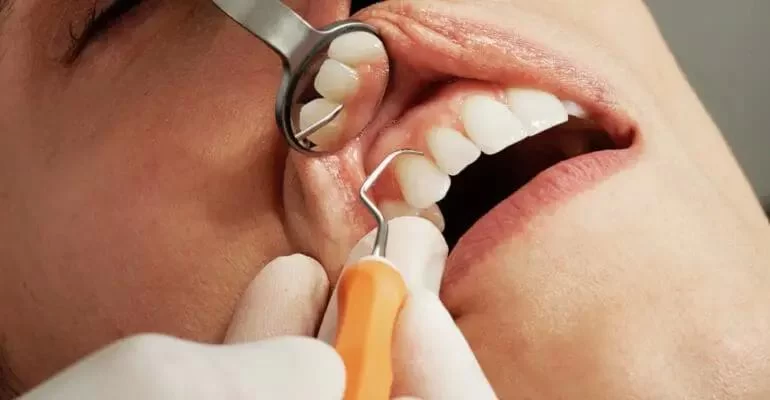
- Understanding Gum Health Post-Orthodontics
- Key Factors Contributing to Gum Disease After Braces
- Essential Oral Care Practices to Prevent Gum Disease
- Professional Maintenance and Monitoring
- Real-Life Case Study and Expert Advice
1. Understanding Gum Health Post-Orthodontics
After completing orthodontic treatment, many patients celebrate the perfect alignment of their teeth. However, the journey to a healthy smile doesn’t end with the removal of braces or clear aligners. Maintaining optimal gum health is crucial, as the period following orthodontic treatment is a vulnerable time for the gums. The gums may have experienced inflammation or irritation during treatment, and residual plaque or tartar buildup can create the perfect environment for gum disease to develop.
Gum disease, or periodontal disease, encompasses conditions ranging from mild gingivitis to severe periodontitis, which can lead to tooth loss if untreated. Orthodontic appliances often make cleaning challenging, increasing the risk of bacterial accumulation around the gumline. Understanding this risk is the first step in effective care maintenance and disease prevention after orthodontic treatment.
1.1 The Impact of Orthodontic Treatment on Gum Tissue
Orthodontic appliances apply continuous pressure to teeth, gradually moving them into new positions. This movement can temporarily stress the surrounding gum tissue, sometimes causing swelling or minor bleeding. If proper hygiene is not maintained during and after treatment, these issues may worsen. Post-treatment, gums need time and proper care to regain full health and resilience.
1.2 Why Post-Treatment Care Is Critical
Without careful maintenance, patients risk the development of gum pockets, plaque retention, and inflammation. These factors are gateways to gum disease. Establishing a consistent oral care routine immediately after orthodontic treatment is vital to ensure gums remain healthy and the beautiful smile achieved is preserved.
2. Key Factors Contributing to Gum Disease After Braces
Several factors can increase the risk of gum disease following orthodontic treatment. Recognizing these elements can help in tailoring effective prevention strategies.
2.1 Plaque and Tartar Accumulation
During orthodontic treatment, brackets and wires create many nooks and crannies that trap food and plaque. Even after braces are removed, some areas may be harder to clean thoroughly, leading to plaque buildup. Over time, plaque hardens into tartar, which irritates the gums and fosters bacterial growth.
2.2 Changes in Oral Microbiome
The oral microbiome—the complex community of bacteria in the mouth—can be disrupted during orthodontic treatment. If harmful bacteria dominate, the risk of gum inflammation and infection rises significantly. Rebalancing this microbiome through proper hygiene and possibly professional interventions is essential.
2.3 Inadequate Oral Hygiene Practices
Some patients reduce the intensity of their oral care routine once braces are removed, mistakenly believing the hardest part is over. Neglecting daily flossing, brushing, and rinsing can quickly lead to gum problems. Additionally, lack of knowledge on effective post-orthodontic care may cause improper maintenance.
3. Essential Oral Care Practices to Prevent Gum Disease
Preventing gum disease after orthodontic treatment requires adopting and maintaining a comprehensive oral care routine that addresses all potential risks.
3.1 Meticulous Brushing and Flossing Techniques
After braces, it’s crucial to clean every tooth surface thoroughly. Using a soft-bristle toothbrush or an electric toothbrush designed for sensitive gums can enhance plaque removal without causing irritation. Flossing is equally important, with options like floss threaders or interdental brushes making it easier to clean between teeth and around any remaining orthodontic fixtures.
3.2 Incorporating Antimicrobial Mouthwash
An antimicrobial mouthwash can help reduce bacterial load in the mouth, lowering the risk of gum disease. Look for mouthwashes containing ingredients like chlorhexidine or essential oils, but use them as recommended to avoid side effects such as staining or altered taste sensation.
3.3 Maintaining a Balanced Diet and Hydration
Nutrition plays an underrated role in gum health. Diets rich in vitamins C and D, calcium, and antioxidants support gum tissue repair and immune function. Staying well-hydrated encourages saliva production, which naturally cleanses the mouth and inhibits harmful bacteria.
3.4 Routine Use of Dental Aids
Incorporating tools such as water flossers can improve gum health by flushing out debris and bacteria from hard-to-reach areas. These aids complement traditional brushing and flossing, making oral hygiene more effective and enjoyable.
4. Professional Maintenance and Monitoring
Regular visits to a dental professional are essential for maintaining gum health after orthodontic treatment.
4.1 Scheduled Dental Cleanings
Professional cleanings remove tartar and plaque that daily brushing cannot. These appointments also give dentists a chance to detect early signs of gum disease before they progress.
4.2 Monitoring Gum Health and Periodontal Assessments
Periodontal exams measure gum pocket depths and assess tissue inflammation. Tracking these parameters helps tailor personalized care plans to keep gums healthy over time.
4.3 Retainer Hygiene and Follow-Up Care
For many patients, retainers are part of post-orthodontic maintenance. Keeping retainers clean and ensuring proper fit reduces bacterial accumulation and irritation of the gums. Dentists can advise on the best cleaning methods and schedule retainer checkups.
5. Real-Life Case Study and Expert Advice
Consider the story of Sarah, a 22-year-old who completed two years of braces. Excited by her new smile, she initially relaxed her oral hygiene routine. Within six months, she noticed swollen and bleeding gums. Upon visiting her dentist, she learned that early-stage gingivitis was developing due to plaque buildup. With guided education and professional cleanings, Sarah improved her brushing and flossing techniques, used an antimicrobial rinse, and maintained regular dental visits. Her gums healed, and she preserved her orthodontic results.
This case highlights the importance of ongoing care and education. As dental professionals at Dentistry Toothtruth emphasize, patient commitment to post-treatment maintenance is as vital as the orthodontic work itself. Our platform offers access to top-quality dental products, expert advice, and tailored services designed to support your oral health journey after orthodontics.
Taking these proactive steps ensures your gums remain healthy and your smile stays radiant for years to come.







 Daniel Jeffrey Cohen, DDS5.0 (117 review)
Daniel Jeffrey Cohen, DDS5.0 (117 review) Gentle Dental Moreno Valley4.0 (147 review)
Gentle Dental Moreno Valley4.0 (147 review) Island Coast Dentistry5.0 (302 review)
Island Coast Dentistry5.0 (302 review) Dental Arts of Hastings-on-Hudson | Part of the Roligo Network4.0 (130 review)
Dental Arts of Hastings-on-Hudson | Part of the Roligo Network4.0 (130 review) East Valley Periodontics4.0 (993 review)
East Valley Periodontics4.0 (993 review) Schuller Dental5.0 (196 review)
Schuller Dental5.0 (196 review) The Importance of Oral Health Education During Pregnancy for a Healthy Pregnancy
The Importance of Oral Health Education During Pregnancy for a Healthy Pregnancy Best Tips for Brushing Your Teeth Properly for Healthy Gums: Essential Techniques for Oral Health
Best Tips for Brushing Your Teeth Properly for Healthy Gums: Essential Techniques for Oral Health Why Skipping Dental Checkups Can Lead to Bigger Oral Health Problems
Why Skipping Dental Checkups Can Lead to Bigger Oral Health Problems Advantages of Porcelain Dental Restorations
Advantages of Porcelain Dental Restorations How Can Diabetes Cause Tooth and Gum Problems? Preventing and Managing Oral Health Issues
How Can Diabetes Cause Tooth and Gum Problems? Preventing and Managing Oral Health Issues Healthy Habits for Promoting Good Oral Health and Hygiene: Tips for a Healthy Smile
Healthy Habits for Promoting Good Oral Health and Hygiene: Tips for a Healthy Smile